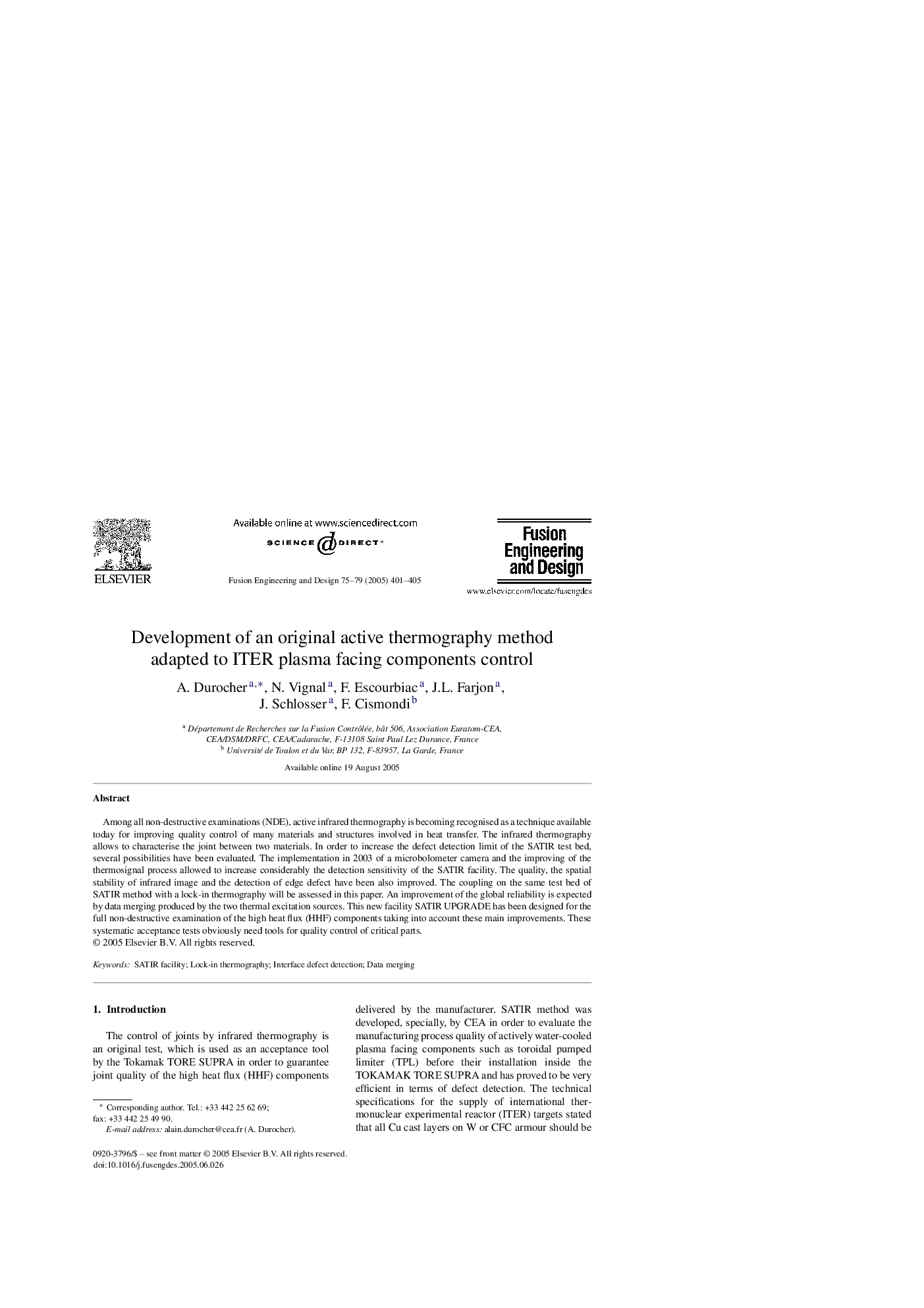| Article ID | Journal | Published Year | Pages | File Type |
|---|---|---|---|---|
| 9638262 | Fusion Engineering and Design | 2005 | 5 Pages |
Abstract
Among all non-destructive examinations (NDE), active infrared thermography is becoming recognised as a technique available today for improving quality control of many materials and structures involved in heat transfer. The infrared thermography allows to characterise the joint between two materials. In order to increase the defect detection limit of the SATIR test bed, several possibilities have been evaluated. The implementation in 2003 of a microbolometer camera and the improving of the thermosignal process allowed to increase considerably the detection sensitivity of the SATIR facility. The quality, the spatial stability of infrared image and the detection of edge defect have been also improved. The coupling on the same test bed of SATIR method with a lock-in thermography will be assessed in this paper. An improvement of the global reliability is expected by data merging produced by the two thermal excitation sources. This new facility SATIR UPGRADE has been designed for the full non-destructive examination of the high heat flux (HHF) components taking into account these main improvements. These systematic acceptance tests obviously need tools for quality control of critical parts.
Keywords
Related Topics
Physical Sciences and Engineering
Energy
Energy Engineering and Power Technology
Authors
A. Durocher, N. Vignal, F. Escourbiac, J.L. Farjon, J. Schlosser, F. Cismondi,
